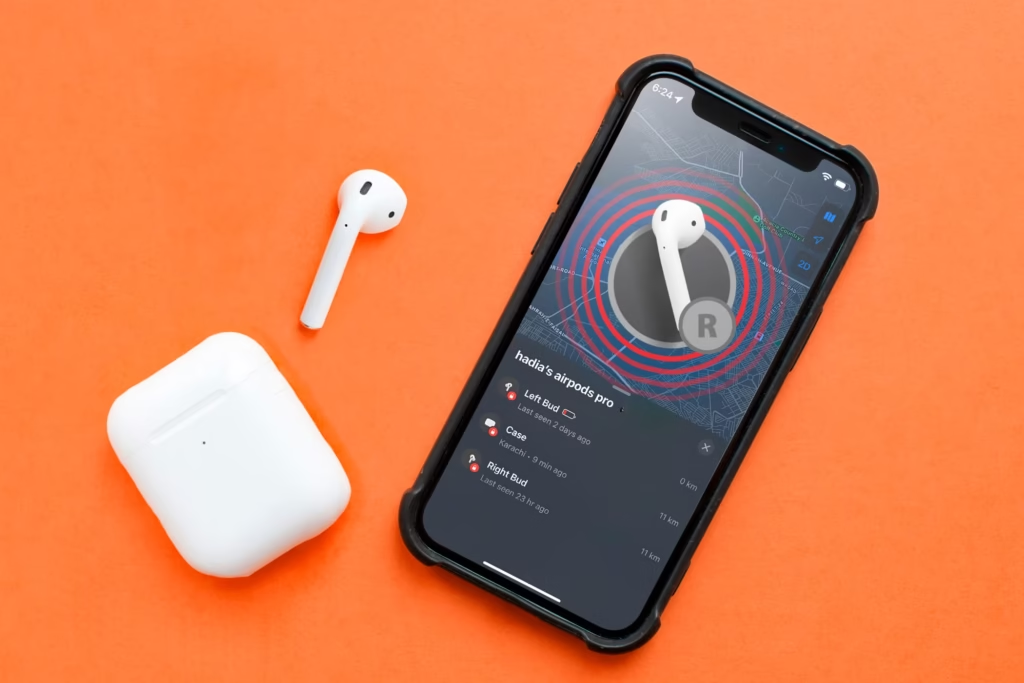It’s annoying to lose your AirPods, but most of the time it’s the charging case that goes missing, so you have perfect earbuds but no means to charge them. The good news is that finding that missing case can be easier than you think, depending on the model of your AirPods.
The case itself was the biggest problem with AirPods tracking for years. Unlike the individual AirPods, older cases didn’t have the technology inside them to broadcast their whereabouts on their own. If your AirPods were snugly inside their case when they went missing, you probably wouldn’t be able to use Apple’s “Find My” app to find them. It only showed you the last known position of the AirPods themselves, which was only valuable if they were out of the case when they were last linked to your iPhone.
Apple has made significant progress in tracking its AirPods, particularly with the release of newer versions.
The Game Changer: AirPods Pro 2nd Generation and Later
If you own AirPods Pro (2nd generation) or a newer model, you’re in luck! The “Find My” software can now track these newer cases independently because they have the proper necessary hardware. This means:
Exact Location Tracking: You can view the location of your case on a map, even if the AirPods aren’t in it.
Play a Sound: You can now play a sound from the case itself, just like you can with your own AirPods, to help you locate it if it’s nearby. This is quite helpful for times when you think, “It’s in this room.”
Find Nearby Feature: The “Find Nearby” feature allows you to locate the case’s exact position by providing visual and haptic feedback, similar to tracking AirTags.
This new feature is a tremendous help for anyone who has ever frantically searched for a case that seemed to be lost.
For older models of AirPods (and when the AirPods are in their case)
If you have AirPods (1st, 2nd, or 3rd generation), AirPods Pro (1st generation), or AirPods Max, the process is slightly different. You can’t track the case on its own, but you can still use the “Find My” app in several situations:
If your AirPods were in the case when it went missing and the case was open, the “Find My” app will show you where they were last seen. This is likely where the case itself is located. You can also try to play a sound, but it will originate from the AirPods themselves, not the case. This will only work if the case is open and the AirPods are linked to your device.
Last Known Location: The “Find My” app will display to you the last place the AirPods were connected to your Apple iPhone, even if they are offline or out of battery. This could be a significant place to start your quest.
How to Use the “Find My” App to Find Your AirPods Case
If you have a compatible model or the correct conditions, finding your AirPods case is easy: To open the Find My app on your iPhone, iPad, or Mac, go to “Find My.”
Go to the Devices Tab: Click on the “Devices” tab at the bottom of the screen.
Choose Your AirPods: Tap on your AirPods from the list of your Apple devices.
View on Map: A map will indicate where your AirPods (or the case, if you have AirPods Pro 2 or later) were last seen or are now.
Play Sound (if available): If your AirPods (or case) are close by and connected, you’ll see a choice to “Play Sound.” When you tap here, your device will beep in a series that becomes louder as you get near.
Find Nearby (AirPods Pro 2nd Gen+): The newest versions have a “Find Nearby” option. This will provide you with a more accurate, compass-like way to locate your case.
If your AirPods or case aren’t nearby, press “Directions” to launch Apple Maps and find out how to locate them at their last known position.
If you still can’t find them, you can “Mark As Lost.” This locks your AirPods, displays a message with your contact information to anyone who sees them, and alerts you if their location changes.
How to Avoid Losing Things in the Future
Technology can help, but the most effective approach to avoid problems is to prevent them from happening. These strategies can help you keep your AirPods case from becoming lost:
Add a Loop or Lanyard: Lots of third-party cases for AirPods come with loops or carabiners that make it easy to attach them to your keys, bag, or belt loop.
Buy an AirTag: If your AirPods case is older and doesn’t have built-in tracking, consider getting an Apple AirTag. This small tracker, approximately the size of a quarter, can be placed in a protective cover for your AirPods case. It has strong “Find My” network tracking capabilities.
To use “Notify When Left Behind,” go to the settings for your AirPods in the Find My app. If you leave your AirPods (and their case) behind at a place you don’t know, your iPhone or Apple Watch will notify you.
Make a habit of putting your AirPods case in the same place every time you’re not using them. This may be a special pocket, a tray on your desk, or a charging stand.
In conclusion, the ability to monitor your AirPods case has improved with time, especially with the newest versions. However, knowing what you can and can’t do and using the available tools will significantly enhance your chances of getting your beloved audio companion back. So, the next time you panic because you can’t find your AirPods case, take a big breath and let the “Find My” app do its thing.

